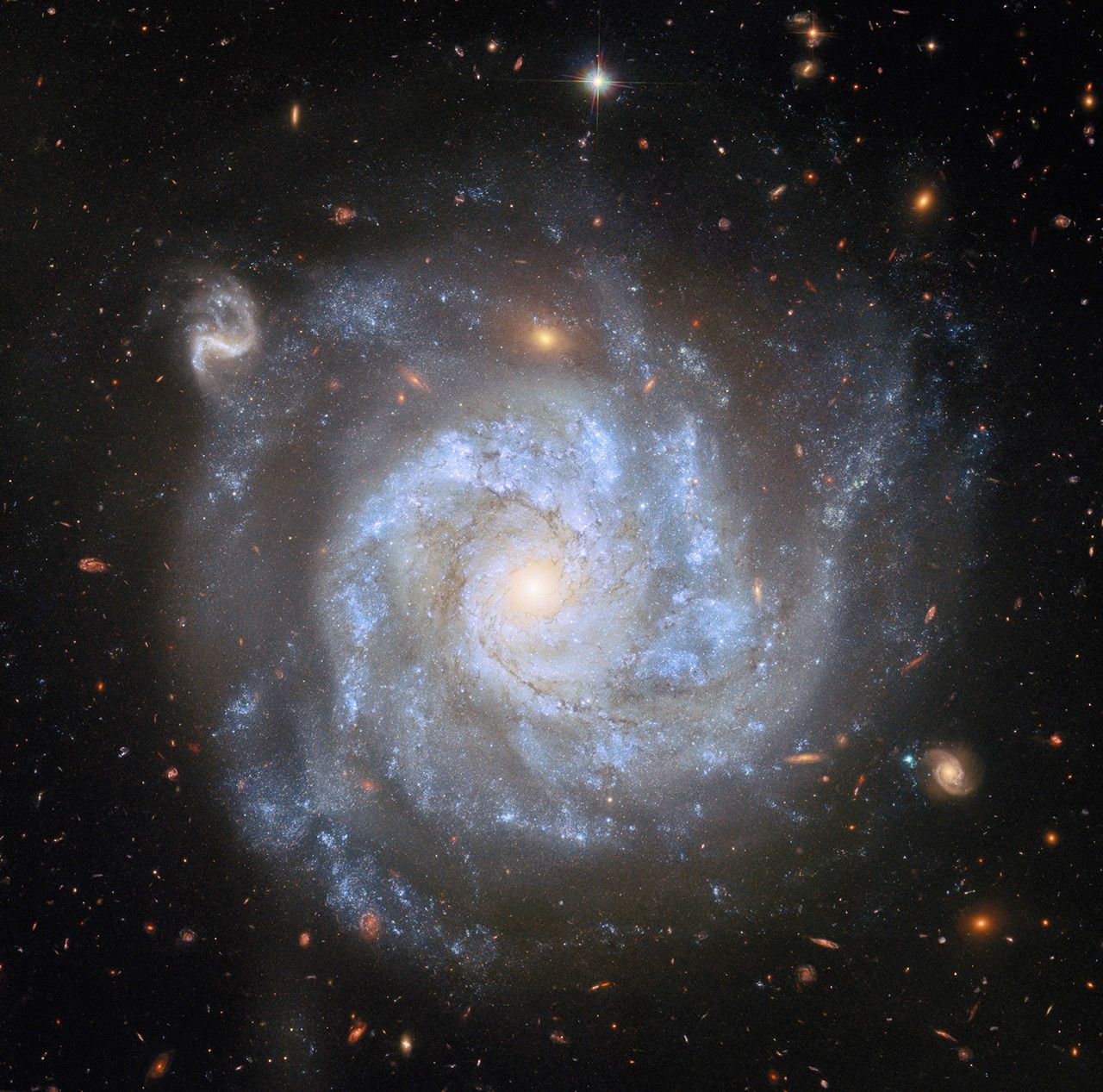Now Reading: Hubble Explores Supernova-Rich Spiral Galaxy
-
01
Hubble Explores Supernova-Rich Spiral Galaxy
Hubble Explores Supernova-Rich Spiral Galaxy

Quick Summary
- NASA’s Hubble Space Telescope captured a detailed image of the spiral galaxy NGC 1309, located approximately 100 million light-years away in the constellation Eridanus.
- The image highlights bluish stars,dark brown gas clouds,and a pearly-white core of NGC 1309,alongside hundreds of background galaxies visible through less dense regions.
- A prominent star from the Milky Way is visible in the frame due to diffraction spikes.
- Hubble has previously imaged NGC 1309 in 2006 and 2014 due to its scientific significance related to supernovae explosions observed in the galaxy:
– SN 2002fk, a Type Ia supernova resulting from an exploding white dwarf star-a key model for understanding supernova behavior.
– SN 2012Z, classified as type Iax but unusual as it left behind a “zombie star,” where the white dwarf survived and grew brighter post-explosion. This phenomenon marked a first for astronomers studying such systems.
Text Credit: ESA/Hubble
Media Contact: Claire Andreoli (claire.andreoli@nasa.gov)
image source: NASA/ESA
Indian Opinion Analysis
India’s space research community may find tremendous value in exploring advancements enabled by international projects such as NASA’s Hubble Space Telescope. the study of phenomena like “zombie stars” or deep galactic imagery could facilitate deeper collaborations between ISRO scientists and global entities on astrophysical challenges. Projects akin to this could provide pathways for graduate researchers or laboratories in India focusing on stellar evolution, cosmic distances measurement using Type Ia supernovae, or unique phenomena like Type Iax classifications.
This discovery also underscores the importance of next-generation observation tools-similar initiatives with India’s upcoming space telescopes (such as Aditya-L1) might benefit vastly from shared expertise showcased by long-term international missions like Hubble. Ultimately, nurturing cross-agency collaboration enables not only scientific growth but also heightened visibility for Indian astronomy efforts globally.
























